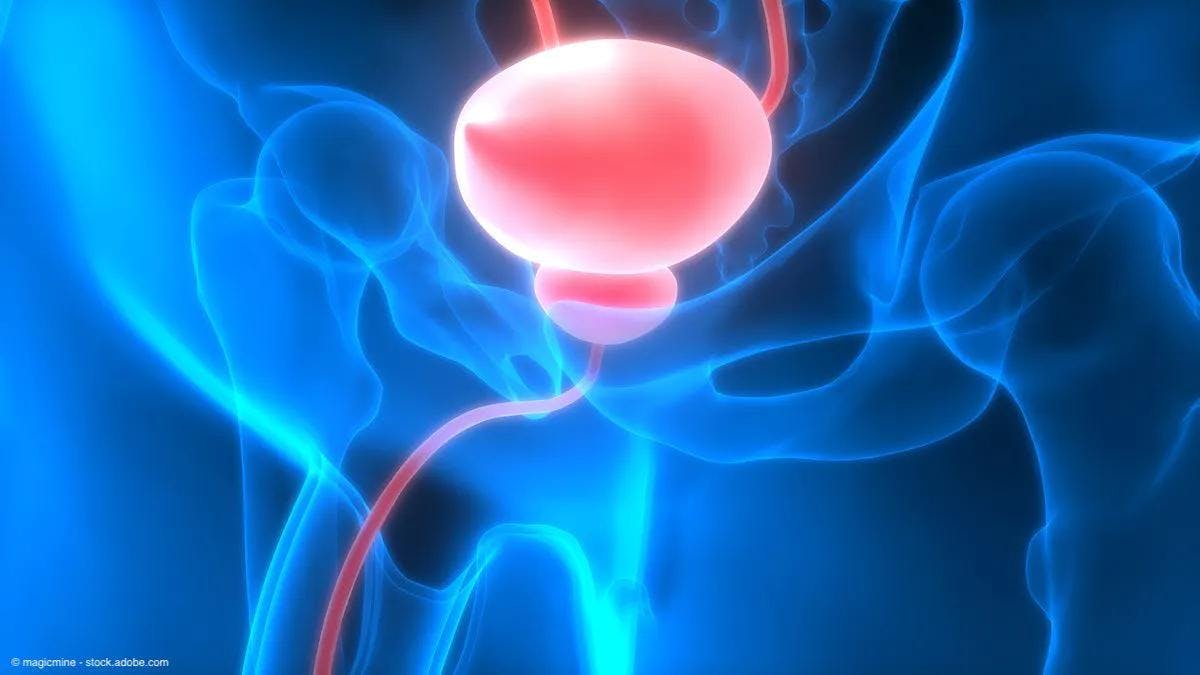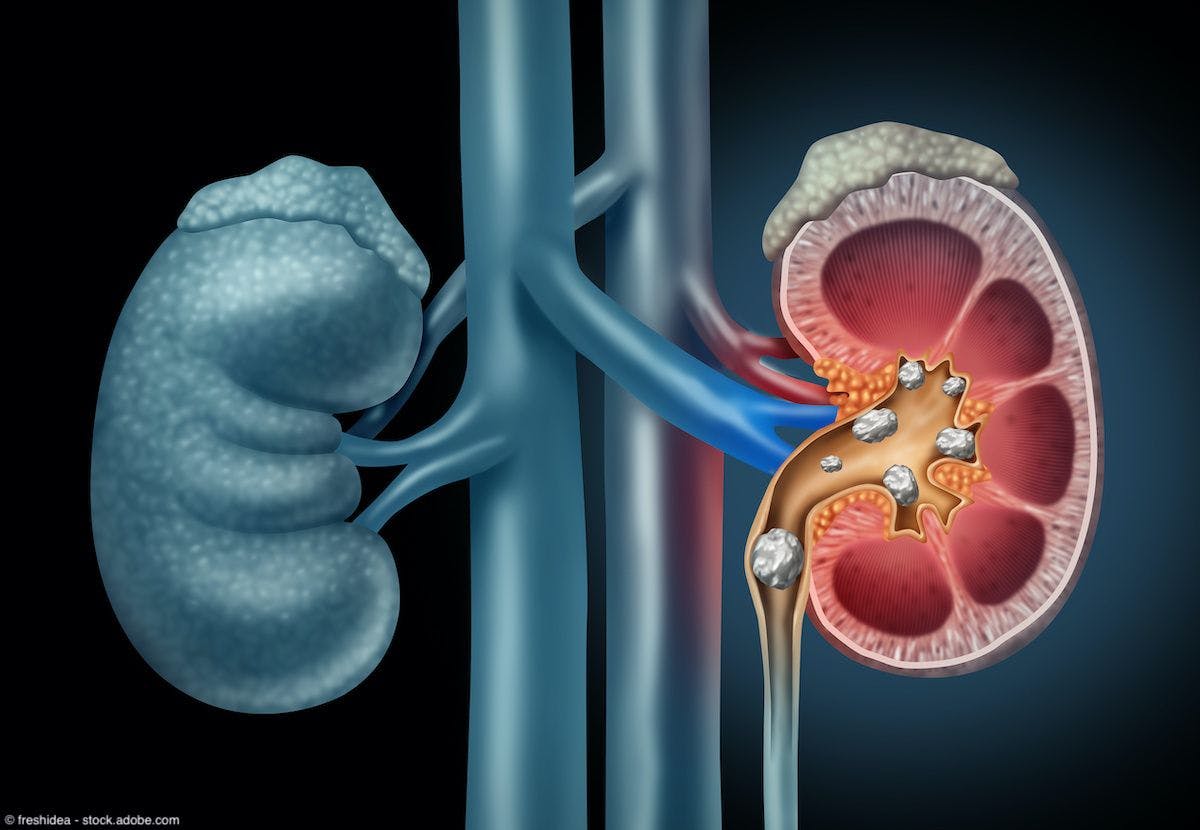News
Article
Urology Times Journal
Surgical ergonomics in urology: A growing movement
Author(s):
"Data have shown among surgeons in multiple specialties that a good chunk of people have pain; probably around 60% of people have pain that they associate with operating," says Kristin Chrouser, MD, MPH.
Surgical ergonomics was the subject of multiple discussions at the American Urological Association 2023 Annual Meeting in Chicago, Illinois. In this conversation, Kristin Chrouser, MD, MPH, and Amy Park, MD, discuss the growing movement for incorporating ergonomics into surgical practice. Dr. Chrouser is the S Matthew Berge MD Research Professor and an associate professor of urology at the University of Michigan in Ann Arbor. Dr. Park is the Section Head of Female Pelvic Medicine & Reconstructive Surgery in the Obstetrics & Gynecology Institute at Cleveland Clinic in Cleveland, Ohio.
Please discuss the scope of the problem of surgery-related musculoskeletal injury.
Kristin Chrouser, MD, MPH

Chrouser: There's the act of surgery itself, which is hard on people's bodies. And I think on top of that, you have the stress of a surgical lifestyle; as everyone knows, that can certainly also impact your tension. Those 2 together can be a little bit of a toxic soup. Data have shown among surgeons in multiple specialties that a good chunk of people have pain; probably around 60% of people have pain that they associate with operating. Most of that is back and neck. And then if you look at urologists, in particular, the AUA Census data from 2018, there were some questions about work-related discomfort, and about 46% of urologists have some work-related discomfort.1 In other surveys, people have complained that there's too much response bias. In other words, if you respond to an ergonomic survey, you're probably more likely to have ergonomics symptoms. So people always assumed it was a bit of an overestimation. What was nice about the AUA census is there's less of that bias, because it was not just an ergonomic survey. The piece of data I found kind of scary in that census was that the worst discomfort was actually in younger urologists who are women. I think that also tells us something about the risk factors of a surgical lifestyle and spending a lot of time in the operating room.
Amy Park, MD

Park: Dr. Chrouser is absolutely correct. It's up to 60% for 12-month pain estimates. In terms of cervical lumbar spine pathology, rotator cuff, it's about 20%. And then carpal tunnel is about 10%. The scariest thing is these numbers probably are an underestimate. In a JAMA meta-analysis,2 about 12% of physicians needed to either curtail their careers or modify their work activity due to disability related to work-related musculoskeletal disorders. So not only is it highly prevalent, you can incur a career-ending injury, or at least not be able to practice the way that you would normally practice. If you're a surgeon-urologist and you can't operate anymore or you can only do certain kinds of cases, it restricts your scope of practice. You can see quickly that it's not only a work force issue—and there are not enough urologists as it is—on the individual level, it's definitely a wellness issue.
Chrouser: Absolutely. And along those same lines, there's a question that's been in several surveys of other specialties. And I have some data on urologists that I never published, which also asked the same question, which is, do you worry that your pain or discomfort is going to affect your ability to do what you do in the future? And around 50% of vascular surgeons, micro surgeons, general surgeons, and, in these nonpublished data, urologists, are worried that pain or injury is going to affect their long-term ability to do what they do. That’s terrifying. We might not talk about this stuff very much because of surgical culture and many other reasons, but I think that that really goes to the heart of it. People are worried that this is not a sustainable lifestyle.
Park: I think now that the door has been opened on the conversation, it's a generational shift in terms of openness of culture. I would say, now, if you start talking about it, everyone has a story. We wrote an article in Obstetrics & Gynecology on surgical ergonomics and work-related musculoskeletal disorders, and on social media, it had a lot of engagement.2 There were lots of letters to the editor, talking about their own personal experiences, with responses from generalists, maternal fetal medicine, urogynecologists, gyn-oncs. Unfortunately, it's a unifying experience and a universal experience among surgeons.
Dr. Chrouser and Dr. Park also touched on strategies for improving surgical ergonomics.
Chrouser: The way I think about it, there are several buckets. There's the bucket of things that you can do on your own—at home, even—like stay in shape, make sure that you've done strength training, as well as, in an ideal world, aerobic and flexibility training, but also that you're not doing things at home that exacerbate what you do at work. People garden, or they sit on their couch with their laptop, or on their phone with their head down. We do all these things at home that irritate those same cervical spine muscles that are a problem at work.
So there's that home bucket, and then there's the environmental bucket, which is when I walk into the operating room, I want the room set up in such a way that it facilitates my team's posture. This includes things like table height and screen height. There are also adjuncts that can help with back pain. There are standing mats that some people unfortunately call "princess pads." That's another example of old school culture.
Then there are things about the actual build of the room. If you ever have the opportunity to be involved in an OR renovation, request booms, so that screens can come from the ceiling and can be lower. A lot of people have their screens too high and it throws their neck back. We need the ability to bring screens down to a reasonable level so that you can align your body up as much as you can. And then there are environmental things outside the OR like a computer workstation at home or in your office, where the height of where you're typing is aligned correctly, and you have a good chair. For a lot of us, our feet will dangle, and so a lot of people need a footstool and don't even realize it. There are a lot of things that a regular office ergonomics consult can figure out. But if you spend your non OR day in an awkward position in the clinic, that's also contributing to this toxic soup.
The other thing I would say is that there are things that you can do yourself in the operating room or in the clinic that are helpful. [One example is taking] micro breaks in the middle of surgery. I do some micro surgery and I have my circulator set an alarm to remember to stop and stretch. Some people stretch between surgeries. If you have the option, you can alternate sitting and standing for your cases for those of us who do the types of cases where either position is a do-able position. And then there are the adjuncts that we use. You don't want to use super heavy loupes; you don't want to use a super heavy headlamp. Those of us who wear lead when we operate should wear light lead. Some of these adjuncts that we use can really exacerbate these stresses and strains that we have.
Park: This is an example of when the job demands exceed the resources, injury and illness result. So what Dr. Chrouser's talking about—and I totally agree—are things like core work. It's like being an athlete. One of my mentors always said, "Get your head in the game." We just need to be mentally and physically conditioned to be doing this really intense, mentally and physically demanding job. That includes getting enough sleep, doing core work, making sure that we're strong.. It's also about positioning the table, the adjuncts. I don't wear loupes, but [those who do] have to make sure the angle is correct for them. Having your monitors in the correct place, going on step stools for conventional laparoscopy; I operate in the pelvis as a urogynecologist. We need to partner with industry regarding the ergonomics of laparoscopic instrument design because it's a huge strain, and the GI staplers and all of these things are not meant for a smaller hand size. When we're talking about the disproportionate impact on work-related musculoskeletal disorders based on gender, it's not just gender. It has to do with smaller stature, smaller hand and glove size. Disparities in stature is also an interesting thing that has been popping up lately. One of my partners was 6'5" and used to operate with a 5'2" surgeon. How do you even adjust for that? It would be nice if we had electronic platforms that you could go up or down on, although you probably would risk a fall. We're trying to reimagine what the operating room looks like in the future to really preserve our work force and our health because there are all these data showing that there's going to be a work force shortage. We're coming up on a demographic bulge, with the baby boomers now all squarely in the Medicare population, and a lot of people retiring. COVID-19 really pushed a lot of people out. Child care issues have pushed a lot of people out. It's smart thinking in the long run to invest in the future to pay attention to these issues.
Chrouser: Absolutely. I feel like there's always been this perception that we ought to be at loggerheads with industry. This is a situation where we really can align our goals with industry. There's a whole world of surgeons with less hand strength out there. Can we please design for a broader swath of the population? Some of the standards that are used now in terms of hand strength are from the 1980s. You can imagine the demographics in the 1980s for surgeons do not match what it is today. We're essentially putting people at risk, who are actually the people in surgery that add the diverse perspectives that I think have changed the field for the better, and so to put them at extra risk, just because we have the wrong hand size or strength is unfortunate. So, I think, really partnering with industry about how we can do that better [would be great].
Park: I agree. Having a seat at the table for design issues and feedback is extremely important. I hope that that stigma has changed. I think, with startup culture, that's getting a little bit better.
Chrouser: When I've talked to people in industry and asked them, why don't you just redesign this so it's not so hard to squeeze the stapler, maybe it's just an excuse, but I actually think there's something to it, they say that it's a big deal, regulatory wise, to go back to the FDA and make changes in terms of device design and things like that. So, maybe some of [the change] needs to happen at the regulatory level. Maybe that should get some more attention than it does. We'll see.
Park: Take Oxo kitchen gadgets. The whole concept behind them is universal design. Universal design means they're accessible for everybody. That concept can also be applied to surgical instrumentation. It's always been a balance between surgical innovation and safety guardrails and mechanisms. Obviously, we don't want to hamper either, but there should be a middle ground on trying to have something that is better.
Chrouser: I think one of the problems that has caused people not to be willing to ask for something better is that the perception is that that is whining. That's where we really need to normalize the fact that everybody has pain. Tolerating it and just sucking it up is not a sign of strength, it's actually stupid. Because you're going to either end your career, or you're going to be irritable and yell at your nurse, and go home unhappy, and that isn't helping anyone. It's not helping you. It's not helping your team. It's not helping your family. And so I think taking a bigger picture [view], and asking these questions about [with the mindset that,] this isn't just me being whiny and selfish. This is actually just part of what it means to be a well-adjusted surgeon and have a safe career.
Park: Absolutely. I think the mechanism for reporting and the culture around reporting doesn't capture what's going on. But it's just so highly prevalent. Everybody has it when you talk about it in small groups. Everybody says [something along the lines of], "I have tennis elbow." "I have a C spine issue. "I had lumbar disc disease and I had surgery for it." "I have a knee problem." "I have a hip replacement." Yes, it's probably from some other contributing factors too. But a lot of surgeons attribute [their issue] directly to the burden of surgery. A lot of people are using the robot, for example, because they cannot do conventional laparoscopic surgery. It's good to change positions; I do a lot of vaginal surgery, so I switch from side to side. And then I think also just having higher awareness and education and educating our trainees. It’s hard to implement change when we get set in our ways. However, that’s not just a "me" problem; everyone has that kind of thing. Because we're used to doing things a certain way, and you want to preserve what you associate with good outcomes. Just like in sports, having these little techniques and things that people do for superstition. I think that surgical culture prevents people from embracing the micro breaks. I have issues with that, too. I mean, there's a whole science on this. It's called implementation science.
Chrouser: We're actually in the middle of an implementation study right now at Michigan, trying to implement micro breaks. It's really hard. One of the last trials on that, which took place at the Mayo Clinic, found at the end of it that approximately 88% of surgeons planned to continue the breaks. But then anecdotally, when my colleague went back into the OR to do a different study, surgeons would see her and say, "Oh, yeah, I need to do the breaks." They had totally forgotten, even though the vast majority of people planned to do it. That's one of the things about implementation science, to me, that's so interesting, is we spent a lot of time trying to figure out, how can we help you remember, if the barrier isn't that you don't want to do it? Now, some people just don't want to do it. That's fine. But among those of us who actually think it's a good idea, why don't we do it? It's almost like exercise. I think it's a great idea. And then somehow it's 10 at night, I'm getting in my pajamas, and I realize I haven't done any exercise. It's not that I didn't want to; it just wasn't operationalized. And so how do we, in different hospital contexts and different sets of workflows, help people operationalize this in a way that they'll remember and they'll do it consistently? There's no one answer. It's a challenge, for sure. But I think a piece of it is understanding that change is painful. Habits are hard to start. There's a whole science to behavior change, and most of us aren't experts in that. And so understanding the psychology is really important.
Park: I also think the other thing that is super interesting, and this was presented at the Society of Surgical Ergonomics Symposium last year, is what are the work-related musculoskeletal disorders/issues for other members of the surgical team, which I think is fascinating. You have the circulator nurse, you have the scrub tech or scrub nurse, you have the anesthetist, you have the pathology person, and everybody has different positions and there are probably differences if it's open or vaginal, or what have you, but I'm just wondering, if you demonstrate that this is good for the whole team, it's easier for the whole team to realize that this is something we can do together and it can be team building and it can be preventive for all.
Chrouser: That's actually the tack that we took, because I didn't see any way that the surgeons were going to do it on their own. Adding one more thing to the circulator's list of stuff that she already has to do for the surgeon I knew wasn't going to go over well. And since Michigan already emphasizes [the importance of the team], that's how we've pushed it, and we actually surveyed everybody on our teams about their pain; the scrubs have more pain than we do. I think the surgeons found that to be interesting. I had a surgeon tell me, "You showed us that data, and it really got me thinking about the fact that if I choose not to have a micro break, I might be the reason that my scrub is at home at night, popping extra ibuprofen." And so I think for people, it was a little eye opening, just that there was so much pain around, but also just this understanding that we could really all come together on this thing. It's a work in progress, and every specialty is different. We're still in our pilot phase; we'll see how it turns out, but I think you're absolutely right that it can be leveraged as a real team-building exercise. And I think the team is key to it happening; otherwise, as surgeons, we're just not going to remember.
Park: I'm hoping as surgical culture gets less hierarchical that people will have the ability to speak up and advocate for themselves. Because when you're the trainee, it's hard to speak up and say, "Hey, do you want to do a microbreak?"
Chrouser: True; you need psychological safety in that room, even for the circulator to remind the team. We chose to roll it out within teams that were already really close; for example, liver teams that tend to work together and they know each other and the circulators are comfortable with the surgeons. But in teams where everybody's green or doesn't know each other well and there's a lot of turnover, that's a big issue. It must be psychologically safe. The other thing that's interesting, though, and I try and warn surgeons of this, is that they're not going to want to stop and stretch. It always seems like that alarm goes off, and you say, "Not now." And also, sometimes if you're really in the zone, it takes you out of the zone, it's like a pager going off. It's normal to feel that way, and if it's the critical portion of the case, absolutely don't stop. Most of the time, it's not, but you're going to have this sort of annoyance, because it's just an interruption. Then it's just learning to say to yourself, "That's okay. I'm just going to stop and stretch. Because otherwise, if I don't do it now, I will forget." Most of the time, people don't want to stop. Going into it knowing that you're probably going to feel somewhat resistant, at least in the moment, is helpful. What's interesting to me is to hear feedback now from some of the surgeons that I'm working with in this pilot who are doing these huge cases. They say they really appreciate the fact that it clears their mind, which I thought was fascinating. We just have to tap into what makes somebody want to do it and trying to figure that out is the whole challenge of implementation.
Park: I would say micro breaks are probably one of the best studied interventions, but there's all sorts of stuff that was presented at the symposium like exoskeletons and AI-assisted ergonomic assessments. We’re on the cusp of all this innovation, but just me and Dr. Chrouser [working on this] is not going to change things. It has to be a movement; it has to be everyone thinking it's an issue. That is something that I find really heartening because now I've given a couple talks on this, and people really respond to it. The younger folks are saying, "We should definitely be doing this. This is important." Quite honestly, if you're in that much educational debt, the idea of curtailing your career is very scary. I mean, it's scary for anybody, but I think especially for them, it's very scary. I'm crossing my fingers that this is the start of a sea change.
Chrouser: I would add that there's this downstream impact of our pain on our relationships with other people and our irritability level. And sometimes we're quite blind to that in the moment. So I think remembering that it's not just about, "We need to fix this so that we don't have injuries and we don't lose surgeons," that the way the work is done in the moment can be adversely impacted if I fly off the handle because my neck hurts. So I think just understanding that a lot of that we might not even notice, but it does influence how work is done and how surgery is taught, especially in an academic setting.
[It's also important to note that] where someone's pain locations are going to be really different if they're doing robotics vs pure laparoscopic surgery vs microsurgery vs open surgery. The tools that you use to decrease awkward postures might be a little different. Urologists, in particular, probably do the widest variety of surgeries. And so if you still do a lot of different modalities or types of surgery, that's probably good because you're stressing out different parts of your body. But if you become a super sub specialist, and all you do is one thing, you probably are at higher risk, and so then it's particularly important to make sure that that you pay attention to avoiding static posture, or being super still, and avoiding awkward postures.
[Another important concept is] postural resets, which mean, while you're operating, being conscious of where you are in space, and what might be awkward or tight. And that's not natural at all; for most surgeons, we get in the zone, we get super focused, and you can be in a really awkward position and you don't feel it, you don't think about it until you stop. And then you walk out of the room and the epinephrine settles out of your system, and you think, "Wow, something hurts." And so really learning in the moment to be more present and mindful of how long you've been holding positions and doing what people in the ergonomics literature call a postural reset, which is coming back to a neutral position where you're in an awkward or stiff posture. Those are general rules of thumb that people find helpful in the world of surgical ergonomics.
Park: If you're sitting, keep your hips and knees at a 90-degree angle. Adjust the robotic platform appropriately. Of course, we all like the stools with wheels in some contexts, but sometimes it makes you roll away, and then you start rolling away from the field. Make sure that you have lumbar support. It's our job and incumbent on us as trainers to help our trainees become more aware of it too.
Chrouser: When you're learning, inexperience is actually a risk factor for pain and injury. When you're learning, you really are not thinking about your body. That's where academic surgeons need to, as trainees get more and more comfortable with the steps of the procedure, really help them develop good ergonomic habits. When you try and implement something like micro breaks or just even ergonomic adjustments in the operating room, some of the more senior surgeons will eyeroll you, and one way I've actually found to get them on board is to say, "This is the standard of practice for the next generation. And they are dealing with a lot more tech than we did when we were training. And they have to deal with it for a lot longer. And so it behooves us to train someone, so not only can they technically do a procedure, and do it well, but that they can do this for 40 years and do it safely and not end up in a neck brace or have to quit their career early." If they want to operate until they're 100, then they should be able to operate till they're 100. But I don't want them to quit because they hurt. I want them to quit because they found something else they like better than surgery.
References
1. American Urological Association. The State of the Urology Workforce and Practice in the United States 2019. https://www.auanet.org/research/research-resources/aua-census/census-results
2. Epstein S, Sparer EH, Tran BN, et al. Prevalence of work-related musculoskeletal disorders among surgeons and interventionalists: a systematic review and meta-analysis. JAMA. 2018;153(2):e174947. doi:10.1001/jamasurg.2017.4947
3. Yurteri-Kaplan LA, Park AJ. Surgical ergonomics and preventing work-related musculoskeletal disorders. Obstet Gynecol. 2023;141(3):455-462. doi 10.1097/AOG.0000000000005079































